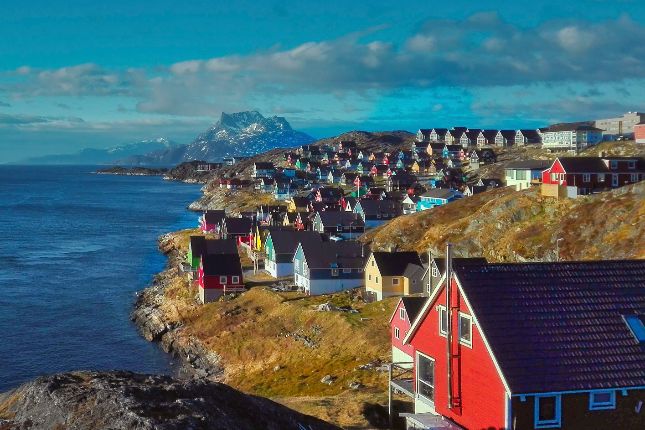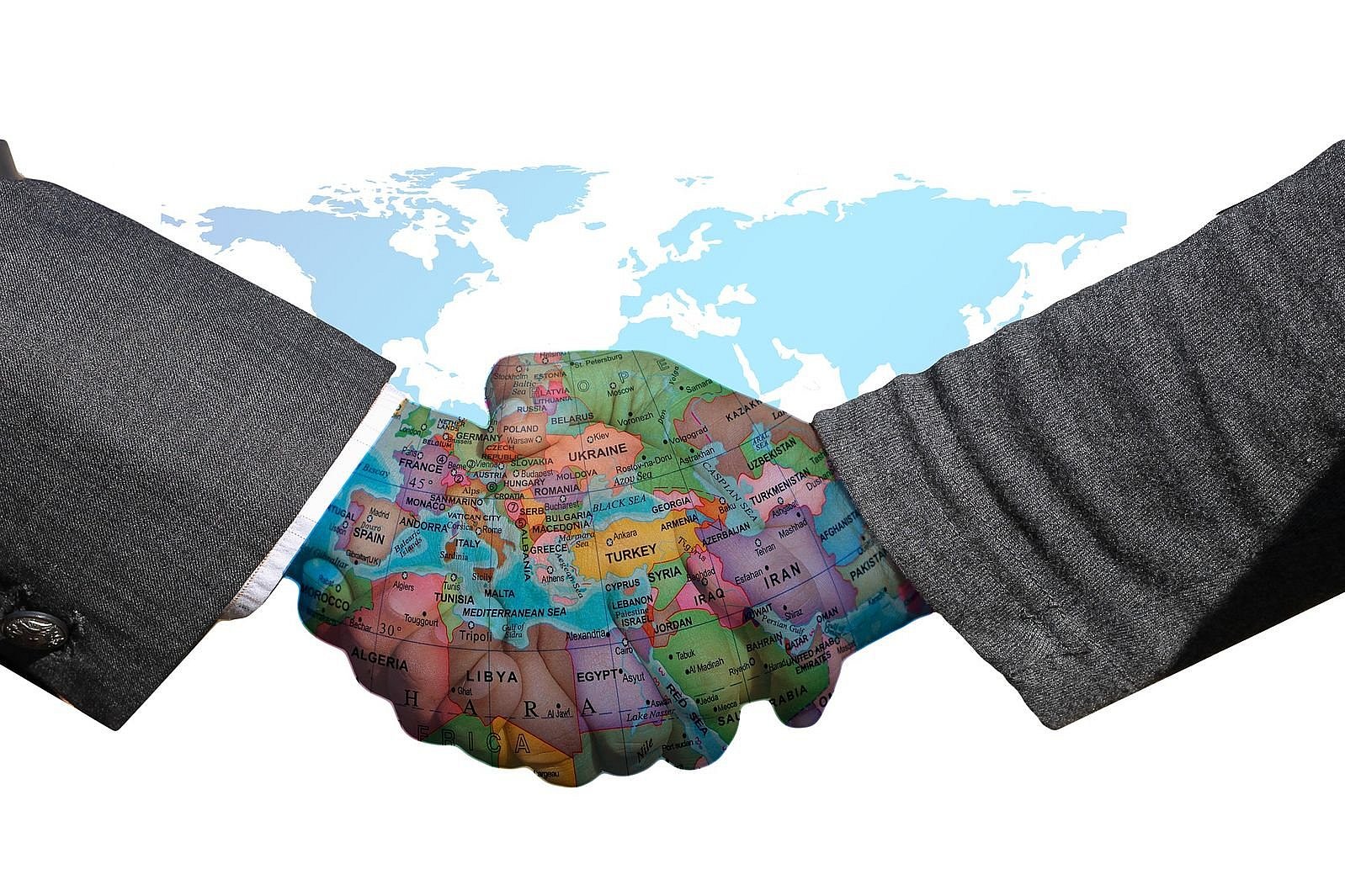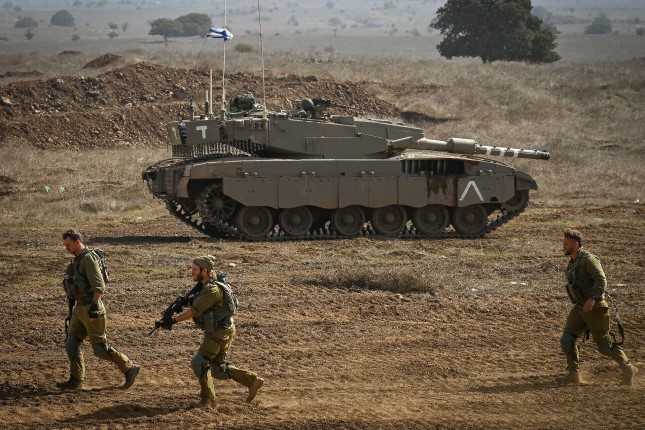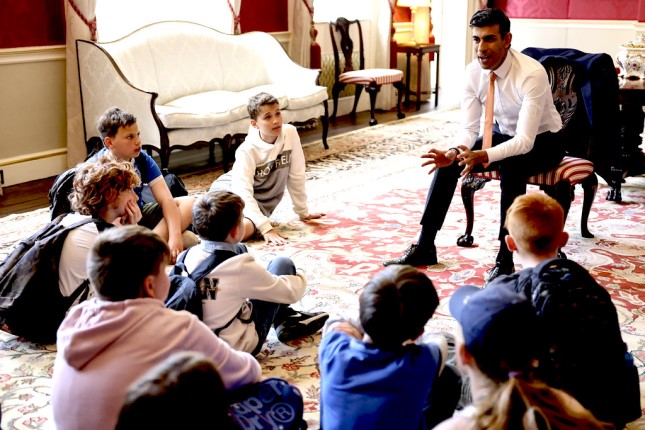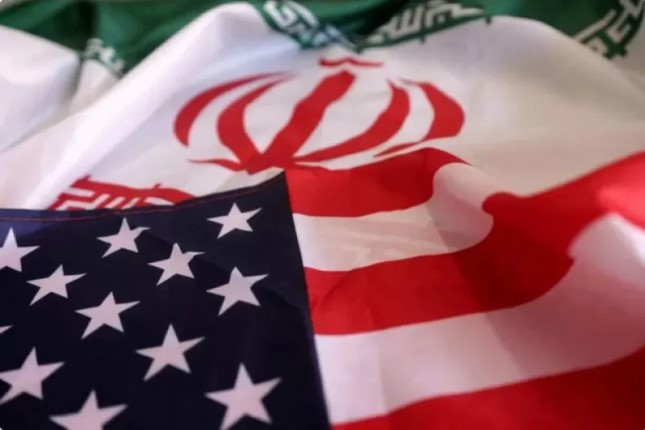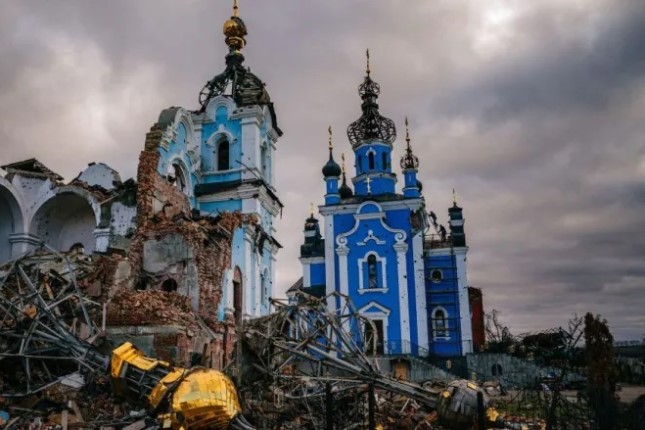Trump’s interest stems from Greenland’s strategic location between the US and Russia, its large untapped deposits of oil, uranium, and rare earth minerals, and its control over Arctic trade routes, particularly the Northwest Passage, which is becoming increasingly navigable as Arctic sea ice disappears.
Trump’s 2019 attempt to buy Greenland outright (or even to trade Puerto Rico for it) was widely dismissed as a joke in both Washington and Copenhagen, but Trump clearly hasn’t let go of the idea, leading House Republican Andy Ogles to introduce the “Make Greenland Great Again Act.”
This renewed geopolitical focus on Greenland is deeply personal. As a human geneticist focused on the study of small, isolated populations, I have spent years researching the relationships between genetics, environment and health in Arctic populations. My experiences in the Arctic, as well as my ability to speak Kalaallisut, has given me insight into how Greenlanders themselves view their place in the world – perspectives often missing from outside analyses.
Because of my familiarity with the region, I knew immediately that Trump’s proposal would provoke a strong reaction in Greenland, where political leaders and everyday people alike see independence, not recolonization by the US, as their future. Múte B. Egede, the head of Greenland’s government Cabinet of Ministers, the Naalakkersuisut, was blunt: “Greenland belongs to the Greenlanders. We are not and will never be for sale.” But he also acknowledged that Greenland’s economic future must involve more international partners, saying, “We remain open to cooperation and trade with our international partners… Not everything can be through Denmark.”
Trump’s offer may have been clumsy and even offensive, but it has forced an important conversation about their future to the forefront – one that Greenlanders themselves are ready to have. While annexation is out of the question, the real debate isn’t about whether Greenland should belong to the US or Denmark, it’s about how soon it can truly belong to Greenlanders themselves.
Brief overview of Pre-colonial Greenlandic history
The human history of Greenland is as dramatic as its landscape. Several migrations of Paleo-Inuit to the island from Northern Canada and Siberia occurred over the last 6000 years. The first permanent settlers of West Greenland, the Saqqaq culture, arrived around 2500 BC, followed by the Early and Late Dorset Cultures, who thrived in the Arctic until about 1350 AD.
For a long time, archaeologists assumed that today’s Greenlandic Inuit were direct descendants of these earlier inhabitants, but genetic evidence tells a different story. Ancient DNA studies of Saqqaq and Dorset remains show that these Paleo-Inuit peoples were genetically distinct from modern Greenlanders, having independently migrated to North America. Their genetic lineage left no detectable trace in today’s Greenlandic population, suggesting they were entirely replaced.
Meanwhile, around 986AD, a group of Norse settlers, led by Erik the Red, arrived on Greenland’s uninhabited southwestern coast, where they established settlements in Qassiarsuk and beyond.
The Norse brought their European agrarian lifestyle to land poorly suited for agriculture, attempting to sustain settlements through a mix of livestock grazing, fishing, and trade with Iceland and Norway. They endured for centuries, but their survival in Greenland was always fragile.
Everything changed around 1200 when the Thule Inuit, ancestors of today’s Greenlandic population, arrived from Alaska and Northern Canada. The Thule, unlike the Norse, were masters of arctic survival. The technologically well-adapted Inuit brought with them dogsleds, umiaqs, qajaqs and advanced harpoon technology which allowed them to hunt whales and seals, efficiently navigate sea ice, and travel long distances.
By the late 1400s, as the Little Ice Age intensified and glaciers advanced rapidly toward their settlements, the Norse settlements vanished from Greenland. Whether due to climate stress, economic isolation, starvation, conflict with the Thule Inuit, or migration back to Iceland or on to Newfoundland, their settlements disappeared completely. Meanwhile, the Thule Inuit expanded all across Greenland, forming the genetic and cultural foundation of today’s Greenlandic population.
When Danish-Norwegian missionary Hans Egede arrived in 1721, his goal was not to colonize new lands, but to reconnect with what he and others believed were still-existing Norse settlements. However, he found only Inuit inhabitants, as the Norse had vanished centuries earlier. Although Egede initially sought only to re-Christianize the Norse, his mission served as a vehicle for Denmark-Norway to reassert its longstanding claim over Greenland.
This presents an interesting question: who are the true indigenous people of Greenland? From the Western perspective, the Inuit are recognized as the indigenous population of Greenland, yet they arrived centuries after Europeans had established settlements there, in a remarkable example of reverse colonization.
Is Indigenous status simply about who was there first, or about who survived and adapted? In the case of Greenland, the Thule Inuit didn’t just survive – they thrived, while the Norse perished, only to return centuries later, hoping to reassert control over their lost territories. By the time they returned, Greenland had been fully Inuit for centuries.
Danish Colonial Rule
The arrival of Egede and subsequent Scandinavian rule disrupted the traditional Greenlandic way of life, replacing subsistence hunting and fishing with an economy geared toward resource extraction for European markets. The Nordic administration framed its policies as bringing civilization, Christianity and modernization, but in reality, it imposed economic control, suppressed Inuit culture, and asserted European dominance.
After the Napoleonic Wars, in 1814, Greenland was formally incorporated as a colony of Denmark, following the breakup of Denmark and Norway. Under the Danish trade monopoly, Greenlanders could only trade with Denmark, ensuring that profits from commercial seal hunting and fisheries flowed to Copenhagen rather than staying in Greenland. As Greenland entered the modern era, it remained financially and politically dependent on Denmark.
Danish colonial rule did not just reshape Greenland’s economy and government, it also left lasting genetic and social imprints. Over three centuries, continuous admixture between Danish men and Inuit women led to today’s Greenlandic population having roughly 25% Danish ancestry. This genetic heritage, however, is notably asymmetrical, as more than 50% of Greenlandic Y chromosomes are European, while over 99% of the mitochondrial DNA is Inuit. This stark imbalance reflects typical colonial power dynamics, where Danish men impregnated Greenlandic women, while Greenlandic men did not return the favor. This historical pattern is still visible today, in social hierarchies, identity struggles, and the enduring divide between Danish-born residents and Indigenous Greenlanders.
Greenland remained largely isolated from broader geopolitical affairs until World War II, when Nazi Germany occupied Denmark in 1940. With Denmark unable to govern Greenland, the US signed the Defense of Greenland agreement, which led to the US setting up weather stations and military bases around the island to defend Greenland from the Nazis and to protect North America from potential Arctic attacks.
Even after the war, the Pituffik Space Base in the far North of the island remained a key part of US Arctic defense strategy to this day, underscoring Greenland’s strategic significance in global security.
When the war ended, Denmark moved aggressively to reassert control of the island, modifying the Defense of Greenland agreement, in light of Denmark and the US both being founding members of NATO. Then, in 1953, it officially changed Greenland’s status from a colony to a county of Denmark, theoretically granting Greenlanders full Danish citizenship. In practice, this policy was about deepening Greenland’s economic integration with Denmark while further disrupting traditional ways of life.
Forced Urbanization and its lasting consequences
As part of its “modernization” efforts, Denmark pursued a policy of forced urbanization. Greenlanders were relocated en masse from small remote settlements around the island to urban centers, replacing their traditional hunting and fishing lifestyles with sedentary life in urban housing projects.
Denmark justified this as a means to provide education, literacy, healthcare, modern infrastructure, economic development and social services more efficiently, but for many Greenlanders, it was a deliberate attempt to Danify the population, to assert their power and control, and to further weaken Inuit identity and self-sufficiency. The consequences of this policy are still painfully evident today.
For example, Nuuk has one of the highest per capita homelessness rates in the Arctic, at about 1.5% of the population. The Greenland Population Health Survey (Inuuneritta II, 2013-2019) noted that “alcohol and drug abuse are one of the biggest health problems for the population in Greenland,” and researchers at Ilisimatusarfik, the University of Greenland, estimate that 20% of the population now lives in poverty. On top of that, sexually transmitted diseases are rampant – in 2020, incidence rates among women aged 18-25 were 17.1 per hundred for gonorrhea, 27.2 per hundred for chlamydia, and 1.2 per hundred for syphilis, some of the highest in the entire world. In many ways, Nuuk is surprisingly reminiscent of an inner-city ghetto. This socioeconomic decline was not an accident – it was a direct result of policies that undermined traditional economic structures and imposed dependency.
The forced urbanization of Greenland and corresponding shift away from active lifestyles and traditional diets has also led to serious health consequences, such as an alarming rise in diabetes and metabolic diseases, as seen in many other indigenous populations. Inuit people historically thrived on a high-fat, low-carbohydrate diet, largely composed of seal, whale and fish. The sudden shift to processed foods, starch-heavy diets, and sugar-laden imports has disrupted metabolic health after millennia of adaptation to Arctic life, leading to skyrocketing rates of diabetes and obesity.
Recently Danish geneticists showed that Inuit-specific common genetic variants in the population have a significant effect on glucose metabolism, especially under high-carb diets. This shows that natural selection had done its job, as even their genomes had become optimized for the high-fat, low carb diets they had relied on for millennia of life in the Arctic. The recent epidemic of diabetes and metabolic disease is primarily due to the widespread importation of easily shipped and stored starch-laden foods like noodles, rice, and bread – i.e. the Western diet, which are inappropriate for them compared with a more traditional diet, because of those genetic adaptations to Arctic life.
The destruction of traditional livelihoods and economic self-sufficiency was only part of the story. Denmark also implemented policies that directly controlled Greenlandic bodies and families – leading to some of the darkest chapters in Greenland’s history.
Cultural Genocide: Adoptions and Parental Testing
In the era of decolonization after World War II, Denmark believed that the key to development in the Arctic was civilizing the population, leading them to impose Danish language and culture as the key to Greenland’s future.
In 1951, they embarked on a social experiment, sending 22 of Greenland’s best and brightest young people, 5 to 9 years old to Denmark, to be raised by Danish families and educated in Danish, intending that they would return to Greenland as the elite ruling class. Nobody explained to these kids why they were removed from their families, and their parents were only told this would be a great opportunity for the kids to have a prosperous and successful future.
After 18 months in Denmark, sixteen of them returned to Greenland (six were adopted by their Danish foster families) and were housed in an orphanage run by the Danish Red Cross. They were not allowed to speak Kalaallisut and were educated exclusively in Danish. When they met their parents, they could no longer communicate with them, as they forgot Kalaallisut, and their parents could not speak Danish. They could see their parents once in a while, but for the most part were exclusively raised around Danish elites in Nuuk.
The experiment failed, as these kids were never accepted as Greenlanders because they could not speak the language and had lost all ties to the culture. Most of them eventually returned to Denmark as a result, and authorities lost interest in the project after Greenland was granted Home Rule in 1979 and reinstated Kalaallisut as the official language.
More than half of these children went on to develop mental illness and substance abuse problems, and the majority died well before age 70. Ultimately, in 2022, the Danish government formally apologized to the six survivors of the experiment, and paid each of them 250,000 Danish kronor (~$35,000), a very meager compensation for the damage this done to their lives.
In addition to these 22 experimental adoptions, hundreds more Greenlandic children were adopted by Danish families from the 1950s to 1970s, often without the parents understanding they were giving away their children and would never see them again. Like the experimental adoptions, this was part of the intentional Danification policy. More lawsuits are in the works against the Danish state seeking similar compensation as was awarded to the experimental adoptees.
In Denmark, where some 17000 Greenlanders currently reside, there has been another ongoing controversy about the so-called “parental competence tests,” which are intended to identify households where children are not properly cared for, so that such children can be placed with foster families who can better care for them. Mostly, this is intended to protect children from abuse or neglect in dysfunctional households.
The tests are conducted in Danish and represent Danish cultural standards and norms for how to raise children. The examiners typically do not speak Kalaallisut and have no understanding of Greenlandic child-rearing culture and traditions. The tests have come under criticism because the rate of children being removed from their parents is five times higher for Greenlandic parents in Denmark than for Danes, representing a significant bias.
Despite the Danish government’s commitment to develop new culturally sensitive tests, children continue to be removed from Greenlandic families to this day, based on the Danish tests. This is yet another example of how Denmark has been breaking up Greenlandic families and continuing to promote Danification despite commitments not to do so, leading Greenland’s Minister for Children and Youth, Aqqaluaq Egede, to declare in December 2024, that “I believe we are facing a historic political confrontation. There are big problems if one of the parties in the commonwealth is not respected as human beings with rights, as a nation or as a people.”
Biological Genocide: Legally Fatherless Kids, and Forced Sterilizations
Another way that Denmark undermined the rights of Greenlandic children was through a law from 1914 that considered the children of unmarried Greenlandic women to be legally fatherless, with no right to know their father, receive support or inheritance from him, or to take his surname. While this law was changed in 1963 in West Greenland and in 1974 in the rest of the island, as of 2016 some 5000-8000 Greenlanders were “legally fatherless.”
Prior to 1914, Danish men who fathered illegitimate children with Greenlanders were obliged to pay child support, but the law was changed to protect transient male workers from Denmark who had children in Greenland, so as not to discourage them from taking temporary work on the island.
As of 2023, the Danish Institute for Human Rights has taken up the case of the legally fatherless, describing what happened to them as “serious” human rights violations.”
Meanwhile, Greenland’s population was exploding as birth rates remained historically high while mortality decreased significantly. In 1961, the total fertility rate was 6.78 children per woman, and the crude birth rate was 46.91 births per 1000 women.
Condoms were widely available but were not widely used, so Denmark decided to address this problem through a massive effort to insert IUDs in Greenlandic women. By 1969, they bragged that “after only two years of program operation, 33 percent of the Greenlandic women of reproductive age had accepted IUDs.” By the mid-1970s, half the women in Greenland had had IUDs inserted, some as young as 12 years old. As a result, by 1975, the fertility rate had dropped to 2.33 children per woman, and the crude birth rate to 17.218.
What sounds like a major public health success turns out to have been largely involuntary – with “the vast majority of women” having had IUDs inserted without requesting it or even consulting a doctor. This was often done at schools and dormitories, even in Denmark, often without the women understanding what was being done to them.
Múte B. Egede described the IUD scandal as “direct genocide that has taken place on the part of the Danish state towards the Greenlandic population.” While Danish politicians uniformly reject this accusation, a former judge at the International Criminal Court said, “the forced insertion of spirals can possibly be characterized as being in violation of human rights – or possibly as crimes against humanity.”
From Colonial Rule to the Fight for Independence
By the 1970s, Greenlanders had had enough. In 1979, after years of political activism, Greenland won Home Rule, giving it control over domestic affairs like language, education, healthcare, and fisheries, while Denmark retained control over foreign relations, national defense, and monetary policy. Further distancing themselves from Europe, in 1985, Greenland withdrew from the European Economic Community, the precursor to the EU, over disagreements concerning hunting and fishing regulations.
Another referendum, supported by 75% of Greenlanders, led to the Self-Government Act in 2009, making Kalaallisut the only official language, giving full control over law enforcement and the judiciary to Greenlanders and indexing economic subsidies to income as resource extraction revenue increases, with a pathway to independence when they became self-sufficient economically.
The question is not if Greenland will become independent—but when and at what cost. As Vivian Motzfelt, the Minister of Foreign Affairs and Independence, said in January, “The fight for independence is Greenland’s business. Our future is ours and must be defined by us. We are aware of our rights as a self-determining people.”
Ultimately, all the political parties in Greenland today advocate for the eventual independence of the island within decades, but they disagree about the rate at which they should aspire to get there. At present, Denmark pays block grants of more than €500,000,000 per year, which is roughly half of Greenland’s budget, and to date this has been the biggest barrier to independence. To that end, Greenland has expressed interest in moving towards a “free association” with Denmark akin to the relationship between the Cook Islands and New Zealand, knowing they do not have the economic or military capability to sustain independence without close affiliations with their neighbors.
Greenland does not currently have an economy large enough to support itself at current standards of living without Danish assistance. However, as Trump pointed out, Greenland has immense natural wealth, with rare earth minerals, uranium and oil, fisheries, and enormous potential for tourism, especially after the completion of a new airport in Nuuk and another scheduled to open soon in Ilulissat, home of the world-famous ice fjord, with some of the world’s best whale watching.
There will soon be direct commercial flights from Nuuk to Newark for the first time, while until now the only ways to get to Greenland were via Copenhagen or Reykjavik. And the current ruling party, Inuit Atqatigiit hopes these new connections lead to diversification of investment sources, as they move towards economic self-sufficiency and ultimately to independence.
Ultimately, President Trump has been approaching this wrong strategically. Rather than negotiating with Denmark to “buy” Greenland – further enforcing colonial thinking, he should rather engage with the Greenlanders themselves, offering more US investment in mineral extraction and a greater military presence on the island to provide for their defense from Russia and China, something that Greenland has repeatedly expressed interest in. Trump took this approach in 2020 when he provided Greenland with a $12 million dollar aid package.
Given Greenland’s past struggles with its colonial past, it is important to acknowledge that the US relationship with its own Native American and Inuit populations has been likewise troubling. And Trump did not help himself when, on his first day in office, he changed the name of Denali back to Mount McKinley in Alaska, showing greater respect for “American greatness” than indigenous concerns.
Trump’s interest has stimulated lots of discussions in Greenland about the economic benefits of closer ties with the US. If this is handled properly, rather than seeking to replace one colonial master with another, Greenland could become an independent partner engaged with both, and benefit from close relationships with both Europe and North America.
Source: AntiWar.
